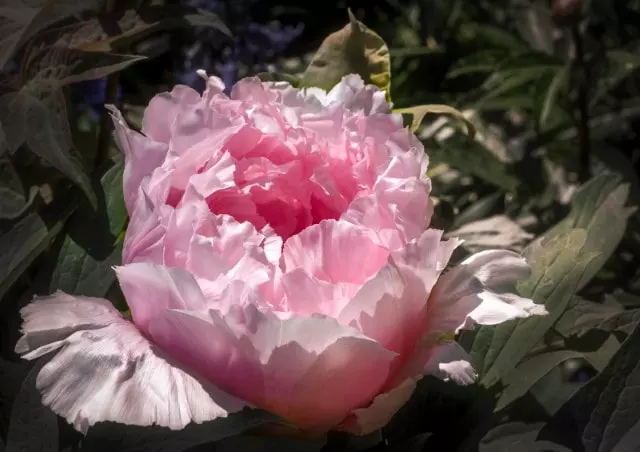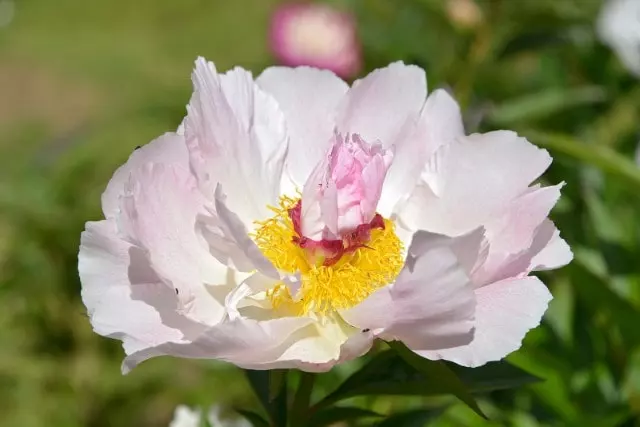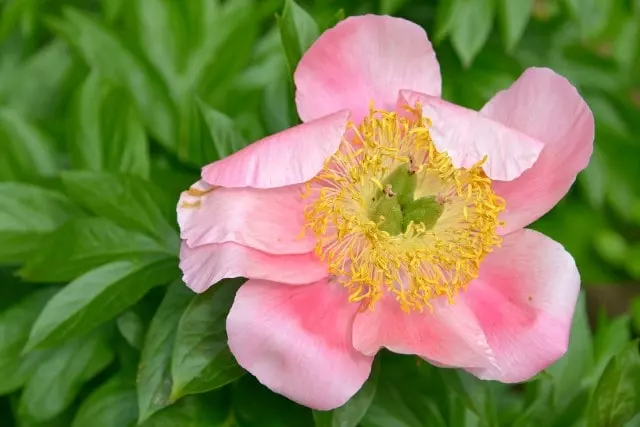The fragrant and spectacular golly flower (Paeonia lactiflora) is a perennial herbaceous plant of Chinese origin, with tuberous roots. It reaches 1.6” to 3.2” (0.5 to 1 meter) in height and grows slowly. It can take four to five years to reach its adult size. This plant is also known as Chinese peony or common garden peony. If you want to learn about the care and propagation of the golly flower continue reading this article.
Table of Contents
Golly Flower Characteristics
The leaves of the golly flower can be whole or divided into intense green leaflets. The Golly flower is one of the most common perennial flowers, found in gardens across temperate climates. Its large, fragrant flowers can be single, double, or semi-double. There are different colors, white, pink, yellow, orange, purple, red, and even marbled. They bloom from late spring to early fall.
The University of North Carolina mentions that Paeonia lactiflora is resistant to deer and rabbits. This is an ideal plant for gardeners looking for plants resistant to these curious animals.
| Botanical Name | Paeonia Lactiflora |
| Common Name | Golly, common garden peony, Chinese herbaceous peony or Chinese peony. |
| Plant Type | Perennial shrub. |
| Flower Color | Pink, white, red, yellow, and bicolor. |
| Size | 20″ to 28″ (50 to 70 cm) tall. |
| Bloom Time | Late spring to early summer. |
| Sun Requirements | Sun or partial shade. |
| USDA Hardiness | 3a-8a |
| Soil pH | 6.5 to 7 |
| Soil Type | Rich, well-draining soil |
| Native Area | Central Asia |
How To Care for the Golly Flower
The Golly flower or Chinese peony is a slow-growing plant that can take up to three years to flower for the first time. It is a slow-growing plant, but for that reason, it is not a difficult plant to take care of. Below I will explain everything you need to know to take care of your golly flower correctly.

Light
The best location for the golly flower is in full sun, with at least 6 hours of sunlight per day. If you live in a warm climate area such as Florida, you can plant the golly flower in partial shade to protect it from the summer heat.
Soil
Golly flower tolerates various types of soil, but the most important thing is that the soil is well-drained and fertile. If the soil has a high clay content or is sandy, organic matter can be added. Waterlogged soil can end up causing botrytis, which is avoided with good drainage.
Avoid planting the golly flower in too-wet soils where water stagnates and does not drain well. Chinese peony does very well in soils with a pH between 6.5 and 7, although it can adapt to other pH levels. I recommend measuring the pH of the soil before planting a Chinese peony. Learn how to measure soil pH.
Watering
Golly flower needs moderate watering twice a week, but more frequently in summer. In regions with regular rainfall, there will be no extra watering on the golly flower.
Spring and fall are the times when the golly flower needs more water, be more attentive to watering during these seasons of the year. Normally, the Chinese peony will develop properly with one inch of water per week.
Temperature
Paeonia lactiflora are plants that develop much better in areas with cold climates. Golly flower survives temperatures from -30 to -20 °F (-34 to -29 °C). The Chinese peony is ideal for environments with mild summers with a temperature between 68 and 77 °F (20 to 25 °C).
To fully induce hibernation that restores growing shoots, they need winter cold. Golly flower grows well in USDA zones 3a to 8a. In USDA zone 8 the flowering of this beautiful plant does not usually last as long as in colder climates.
If you live in an area with very hot summers, it is best to plant the golly flower in an area where it receives partial shade, thus avoiding the strong midday sun.
Fertilize
A Golly flower is not a plant that needs constant fertilizer. If the soil where the golly flower is grown is poor in nutrients you can add fertilizer after the flowering period. Low-nitrogen bulb fertilizers are a good choice for fertilizing golly flowers.
As mentioned above, fertilize the golly flower only if necessary. Apply fertilizer after the flowering period and then again in late summer.
- Feed all bulbs, tubers, corms and rhizomes
- Made with 100% organic and natural ingredients
- Superior blend of fish bone meal, alfalfa meal, feather meal, soft rock phosphate and mined potassium sulfate
Common Diseases Golly Flower
If the substrate of the golly flower is too wet, the plant will be more susceptible to fungal diseases such as botrytis. To avoid fungal diseases in the Chinese peony it is best to have a well-drained substrate and not to overwater.
It is usually attacked by aphids and spider mites, which are treated with neem oil or diatomaceous earth. I recommend our article about how to mix neem oil for plants.

How to Propagate Golly Flower
Golly flowers are best propagated by digging and dividing rhizome root clusters, but this is a somewhat complicated operation. Here’s how to do it:
- During the fall with scissors cut the stems of the plant a few inches above ground level. Then carefully dig to dig up the rhizomes.
- With a sharp knife, divide the root ball into sections with three to five growing eyes at the top of each section.
- Plant the pieces where you want to have the new Chinese peony plants. Do not bury them too deep, no more than 2” (5 cm). The roots of the golly flower need cold to develop properly, so avoid burying them too deep.
With this method of propagation, you must be patient because it can take up to 3 years to see the first flowers on your Chinese peony.
You can also plant your golly flower from seed, but it is a difficult process and much slower than root division, so most people do not plant this plant from seed.
Final Conclusions
Golly flower takes a long time to develop to bloom but once it blooms it gives beautiful flowers in any garden. The scent of the Chinese peony is very pleasant and will give a very nice scent to your garden.
I hope this article will be useful and that you will be able to take care of your golly flower correctly. I recommend our article about how to propagate poinsettia.


